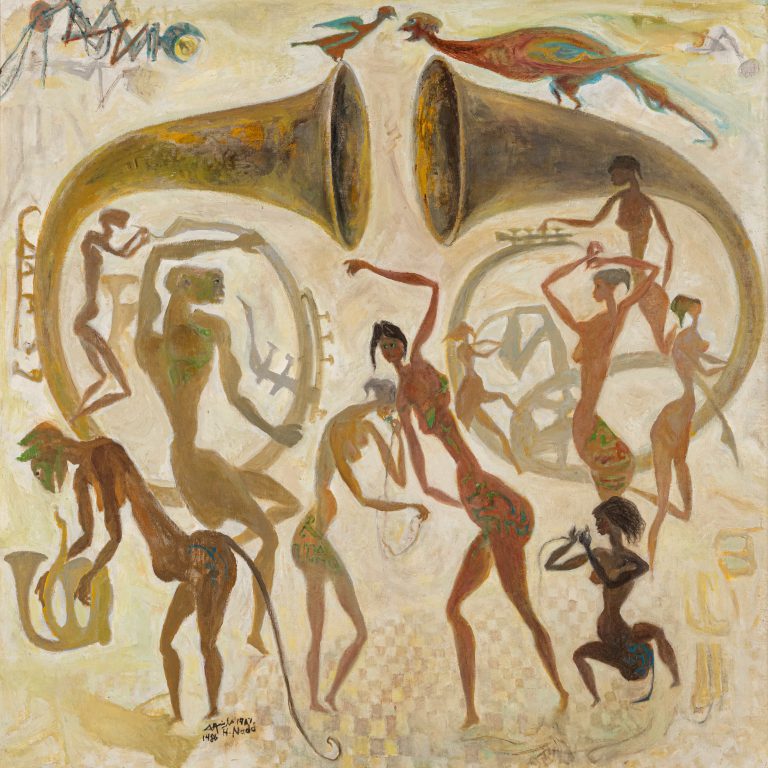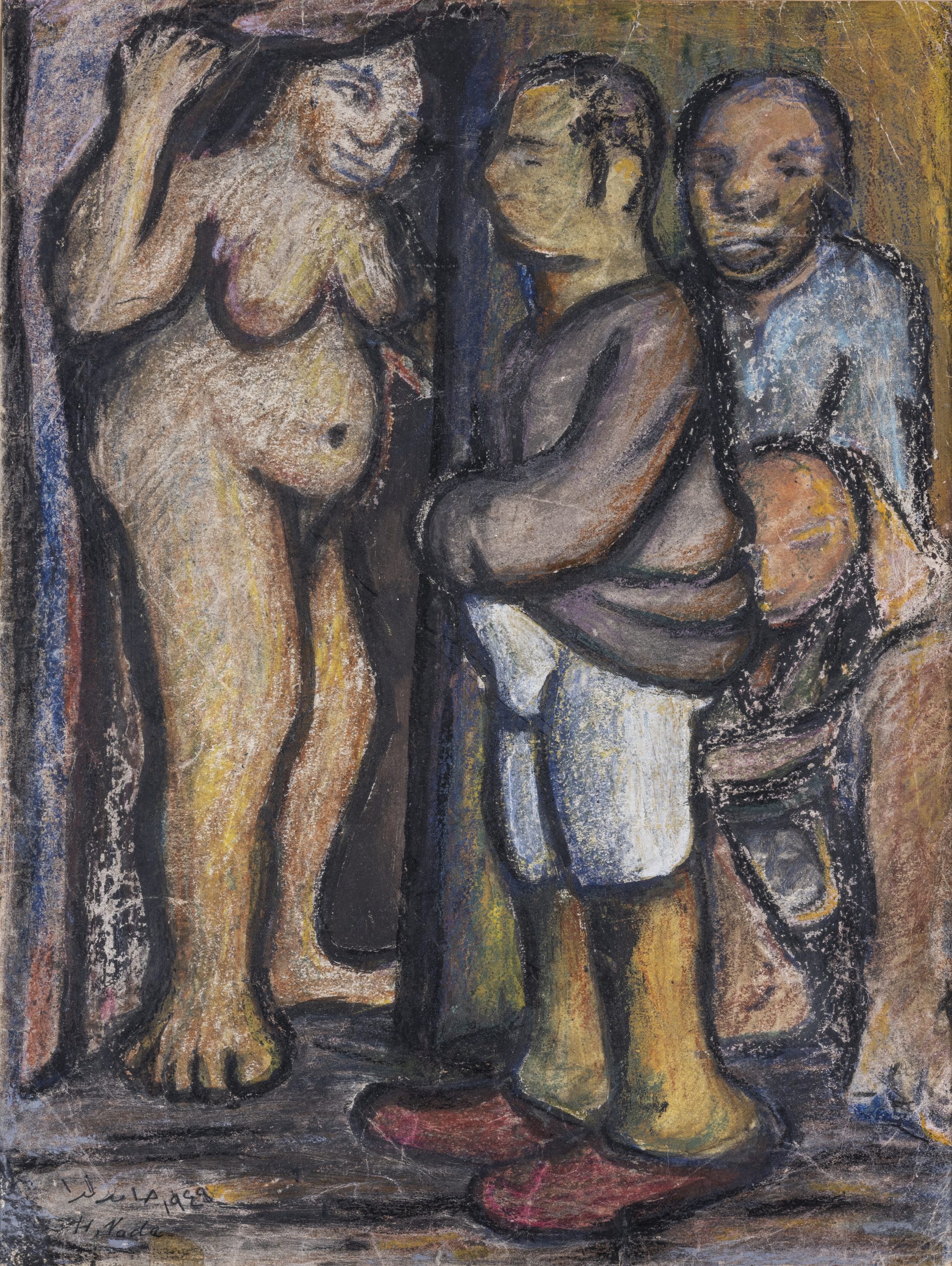Painter
Hamed Nada
Hamed Nada was born in the neighbourhood of al-Khalifa near the Citadel in Cairo.
As the son of a sheikh, he was raised in a religious environment and was profoundly influenced in his childhood by the everyday life of the areas of al-Khalifa and Sayyida Zeinab.
At the beginning of the 1940’s, he was a student at the Secondary School of Hilmiyya (then Faruk Ist School), where he developed an interest in art, psychology, and philosophy. During that time, he met the painter and pedagogue Hussein Youssef Amin (1904–1984), who was teaching drawing in secondary schools.
Amin had rejected the academic system of the School of Fine Arts in Cairo and adopted a new method of art education based on the individual development and freedom of expression of his students. This experience gave birth to the Group of Contemporary Art, in which many of Amin’s pupils, such as Hamed Nada, Abdel Hadi el-Gazzar, Ibrahim Massouda, Maher Raif, Kamal Youssef, Salim el-Habashi, Samir Rafi, and Mahmoud Khalil, were included. The group held its first exhibition in May 1946 at the Lycée Français in Cairo, presenting around 200 works mostly portraying popular life in Egypt and touching on social concerns.
In 1948, Nada joined the School of Fine Arts in Cairo, where he studied under the painters Ahmed Sabry (1889 – 1955) and Youssef Kamel (1891 – 1971) and graduated in 1951. During his studies, he contributed as an illustrator and critic to the literary review, Al-Thaqafa, together with prominent writers and poets such as Taha Hussein and Louis Awad.
In 1956, he was a member of the Luxor Atelier, which was created in 1941 by Alexandrian painter Mohammed Naghi (1888–1965) to promote the study of ancient Egyptian art by art students. Nada stayed in Luxor for one year, observing and studying the frescoes and reliefs of the temples in the Valley of Thebes. When he returned to Cairo in 1957, he was appointed professor of painting at the Faculty of Fine Arts in Alexandria.In 1960, Nada received a scholarship to study mural painting at the Royal Academy of Fine Arts of San Fernando in Madrid. After obtaining his diploma in 1961, he was appointed as a professor at the School of Fine Arts in Cairo and became the head of the painting department in 1977. He continued to work part-time as a teacher after his retirement in 1984 and died on the 27th of May 1990 after a fall in his studio in al-Ghuriyya during a power shortage.
Hamed Nada is one of the most prominent painters of the Group of Contemporary Art. He was one of the first modern Egyptian artists, along with his colleague and friend, the painter Abdel Hadi al-Gazzar, to introduce superstitious symbols and to express human psychology and unconscious fear in his paintings. His early works are strongly influenced by the social environment of the popular areas of Cairo, from which his teacher, Hussein Youssef Amin, encouraged him to draw his inspiration. Nada developed a symbolist pictorial universe nourished by legends of storytellers, popular beliefs and superstitions, as well as the magical and mysterious world of djins.
His works from the 1950’s depict interior scenes of poor communal households, expressing the intimacy of human resignation and fatalism. As a metaphor of the human soul, the cat, the lamp, and the chair are recurrent symbols in his paintings. During the 1960’s, after closely studying the arts of Ancient Egypt while a resident at the Luxor Atelier, Nada’s work started to unfold into two-dimensional spaces animated by stylized and distorted human figures.
He also used brighter colours to represent scenes of Egyptian daily life and political subjects. In these works, one can sometimes discern the influence of Ragheb Ayad (1892–1982), though Nada brought the representation of popular culture to a symbolist and universal level by painting poetic tales of the intimate lives of working-class Egyptians. His works can be seen at the Museum of Egyptian Modern Art in Cairo, the Museum of Fine Arts in Alexandria, Mathaf: Arab Museum of Modern Art in Doha, as well as in numerous private collections all around the world.


